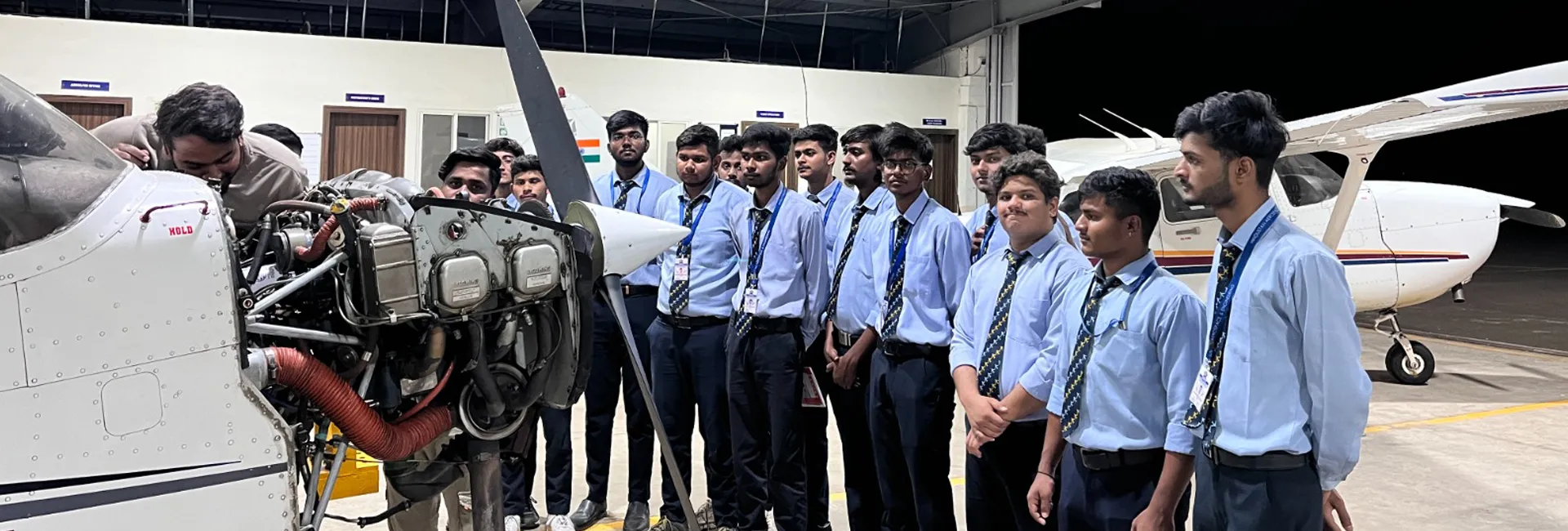An Aircraft Maintenance Engineer (AME) is basically a person licensed to certify the aircraft or its component for its airworthiness before its release to service.

"If a Pilot is Heart of the Aircraft then AME is its Soul."
AME is a job profile with high dignity and a great sense of responsibility. An Aircraft Maintenance Engineer (AME) is basically a person licensed to certify the aircraft or its component for its airworthiness before its release to service. In other words, an Aircraft Maintenance Engineer carries out and certifies overhaul, major repairs of aircraft, power plants, components and accessories thereof before its release to service
in accordance with the national & international aviation standards. All the Airlines, Maintenance & repair organizations, flying clubs, etc. appoint these AMEs for the certification of their aircrafts and its components as per the Government Rules and Regulations. In terms of employment opportunities, aircraft maintenance engineering is probably the most promising in the aviation sector. ”The duty of an AME is to ensure that the Aircraft is in a fit to fly condition before it takes off the ground. As per the rules laid down by the govt. of India". No aircraft can take off without the certification from qualified Maintenance Engineers. To become an AME one has to undergo an AME course from a DGCA approved Institute. These recognized institutes teach the approved syllabus of DGCA & conduct internal examinations for completion of the course. All AME institutes are allotted limited no. of seats in the categories B1.1 (Mechanical) and B2 (Avionics). No AME institutes can induct more students than that allotted by DGCA. Aspiring Aircraft Maintenance Engineers who have obtained the license can start working with private/ government airlines. So, one who has those goals in mind to become part of the challenging aviation industry, can join the AME course & explore the world of his/her dreams.
Initially a candidate may opt only one category for study and after holding the license in one category he may switch to another on fulfilling the eligibility criteria. HAE-Pune is approved by DGCA (Govt of India) to impart training in both the categories i.e. B 1 and B2. Further B1 is again categorized in different categories as per the type of aircraft.
With the recent boom in the Aviation industry and a lot of commercial airlines competing for space in the air, this program has been one of the favorites among students who want to grab a share of that glory. Training for the B1.1 category (Mechanical) Course at HAE-PUNE has been approved by the Directorate General of Civil Aviation (DGCA) under CAR 147 (Basic) for an Intake of 60 students in this category. The duration of training at the institute is 3 years which includes 30% practical training at Air India-Mumbai & Air works-Mumbai. Basically the study in mechanical Stream of AME field is related to the Airframe and Powerplant (Engine) of all kinds of aircraft in which B.1.1 is related to the Heavy Aircraft Fitted with Jet Engine. In this scenario the requirement of Heavy aircraft is more and so the manpower requirement in this area is also High.
The stream which deals with the study and maintenance of Piston Engine & Light Aeroplane Structure is commonly known as Category B1.2 in Mechanical Stream. Students of Mechanical Stream who successfully clear all the Basic Knowledge Module Examination conducted by CEO, DGCA and completes all the maintenance experience requirements stipulated by DGCA in CAR-66 get the Aircraft Maintenance Engineering Licence in Category B1.2.
As per new CAR-66, aspirants who have completed 12th with Physics, Chemistry and Mathematics as core subjects or equivalent from a recognised board or university are eligible to join these courses. If you are a 3-year diploma holder in mechanical, electrical or electronics, you can also join the program.
Duration : 2000 hours
The stream which deals with the study and maintenance of Aircraft Instrument System, Aircraft Radio & Navigation System and Aircraft Electrical System is commonly known as Avionics Stream. Students of Avionics Stream who successfully clears all the Basic Knowledge Module Examination conducted by CEO, DGCA (Govt of India) and completes all the maintenance experience requirements stipulated by DGCA in CAR-66 gets the Aircraft Maintenance Engineering License in Category B2. HAE-PUNE is approved by DGCA, Ministry of Civil Aviation (Govt. of India) for an Intake of 60 students in this category. In this scenario the requirement of Heavy aircraft is more and so the manpower requirement in this area is also high.